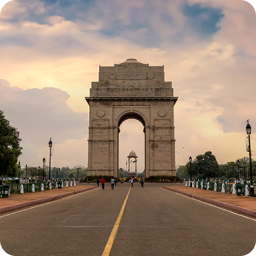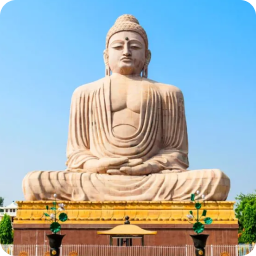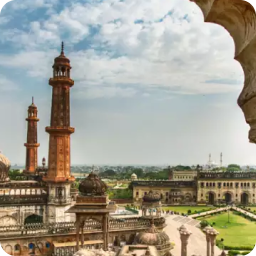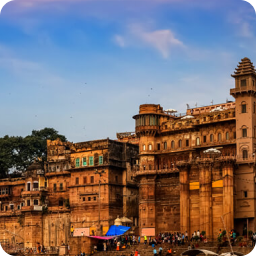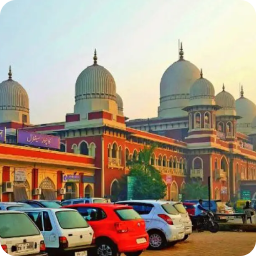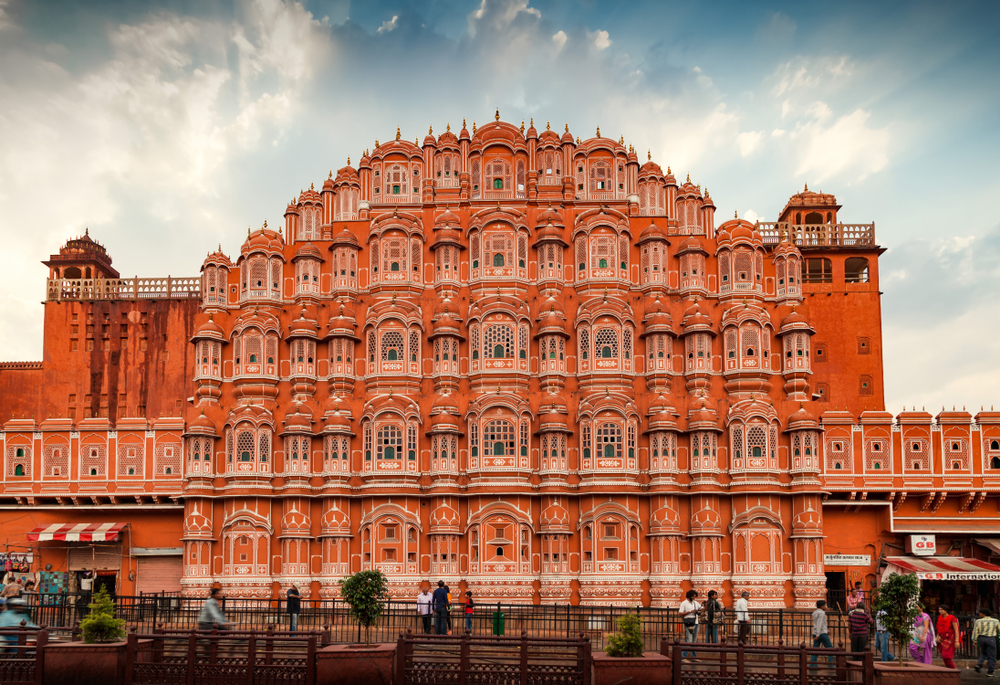|
THE DELHI SULTANATE (1206-1526 AD) – MEDIEVAL INDIA HISTORY NOTES
|
History of Delhi Sultanate Period
- The period between 1206 A.D. and 1526 A.D. in India’s history is known as the Delhi Sultanate period.
- During this period of over three hundred years, five dynasties ruled in Delhi Sultanate:
-
- Slave (1206-1290 CE)
- Khaliji (1290-1320 CE)
- Tughlaq (1320-1413 CE)
- Saiyyad (1414-1451 CE)
- Lodhis (1451-1526 CE)
1. Slave (Ghulam) or Mamluk Dynasty
- Qutub-ud-din Aibak Founded Slave dynasty. It is also known as Mamluk
- Aibak is considered as the real founder of Muslim rule in India.
Enroll now for UPSC Online Course
Qutub-ud-din Aibak (c. 1206 – 1210 CE)
- Founded First independent Turkish Kingdom in the Delhi Sultanate, Indian & assumed the title ‘Sultan’.
- He became independent after Ghuri’s death and began his rule in 1206 A.D.
- He Made Lahore capital.
- He is Known as ‘lakh Baksh’ or giver of lakhs as he gave a lot of liberal donations.
- Aibak issued coins in gold, silver, billon and copper. He discarded carving the name of Abbasid caliph on it.
| ART & ARCHITECTURE
|
- Aibak constructed 2 Mosques:
1. Quwwat-ul-Islam (Delhi).
2. Arhai din ka Jhonpara (Ajmer)
- He Started construction of the Qutub Minar dedicated to Sufi Saint, Khwaja Qutubuddin Bakthiyar Kaki – later completed by Iltutmish.
- He patronized Fakhar-ud-Din, author of Tarikh-i-Mubarak Shahi & Hasan Nizami who wrote Tajul-Masir, the first official history of the Delhi Sultanate.
|
Aram Shah (1210):
- Considered the most incapable ruler. Thus Iltutmish (son-in-law of Aibak) was invited to Delhi à He then deposed Aram Shah and became Sultan.
Enroll now for UPSC Online Classes
Shamsuddin Iltutmish (1210-1236):
- Belong to Ilbari tribe hence named Ilbari dynasty.
- Aibak had appointed him as iqtadar of Gwalior.
- Real consolidator of Turkish rule in India and also Delhi.
- He Shifted capital from Lahore to Delhi.
- He defeated the ruler of Khwarizmi.
- Introduced Arabic coinage into India. Silver tanka became a standard coin in medieval India and also issued Copper jital.
- Created a new class of ruling elite of forty powerful military leaders, the forty (Turkan-i-chahalgani).
- He nominated Raziya as his successor. Thus, the hereditary succession to Delhi Sultanate.
Razia Sultan (1236-40):
- 1st and only female Muslim ruler of medieval India.
- Discarded female apparel and purdah, adopted male attire, went for hunting and let the army thud aroused resentment among Turkish nobles.
- She was not acceptable to Muslim theologians and nobles.
- 1240 – Serious rebellion broke out in Sirhind under Altuniya (governor). Raziya with Yaqut marched to suppress, but Yaqut was murdered and Razia imprisoned. In the meantime, Bahram (another son of Iltutmish) was pit to throne by Turkish nobles.
- Later Raziya while returning back to Delhi was killed on the way.
Enroll now for UPSC Online Coaching
Balban (1266-1287):
- Also known as Ulugh khan. He was one of the main architects of the Delhi Sultanate.
- According to him, the Sultan was God’s shadow on earth (Zil-i-Ilahi) and recipient of divine grace (Nibyabat-i-Khudai).
- He broke the power of the Forty.
- Introduced Persian festival Nawrouz.
- Called himself Nasir-amir-ul-momin (Caliph’s right-hand man).
| Administration
|
- Separated Diwan-i-wizarat (Finance Department) from the Diwan-i-Arz (Military Department).
- Administered justice with extreme impartiality.
- He followed the policy of blood& iron.
- Excluded non-Turks from administration.
- Indian Muslimsà not given important posts.
- Appointed spies to monitor the activities of the nobles.
- Introduced sijada (prostration) and paibos (kissing the Sultan’s feet) to prove his superiority over the nobles.
|
2. KHALJI DYNASTY (1290-1320 AD)
- Khalji nobles headed by Jalaldduin, overthrew the incompetent successors of Balban in 1290 & Est. Khalji dynasty.
- This event is called ‘Dynastic Revolution’ of 1290.
Enroll now for UPSC Online Course
Jalauddin Khalji (1290-1296 CE):
- 1st sultan of Delhi Sultanate to have a benevolent attitude towards Hindus.
- He stated the State should be based on the willing support of the governed and as the majority of the population was Hindu, the state cannot become truly Islamic.
- Adopted the policy of tolerance and tried to win goodwill of the nobility.
- Was murdered by his son-in-law Alauddin Khalji in 1296 and usurped the throne.
Alauddin Khalji (1296-1316 CE):
- Was appointed as Amir-i-Tuzuk (Master of Ceremonies) and Ariz-i-Mumalik (Minister of Law) by Jalauddin Khalji of the delhi sultanate.
- Jalauddin’s policy of tolerance was reversed by Alauddin Khalji; awarded harsh punishment for opposing him.
- To keep hold on nobles –He prohibited to hold festivals, marriage without permission of him, banned wines & intoxicants to avoid social gathering, reorganized spy services (Barids).
- He was the first sultan of the delhi sultanate who separated religion from politics. He proclaimed “Kingship knows no kinship”.
- Barani wrote the book ‘Tarikh-i-Firuz Shahi.
- Patronized poets like-Amir Khusrau and Mir Hasan Dehlv.
- He adopted the title of Sikander-i-Azam and gave Amir Khusrau the title of Tuti-i-Hind (Parrot of India).
- He defeated Mongols in the battles of Jalandhar (1298), Kili (1299), Amroha (1305) and Ravi (1306).
- Malik Kafur was his slave – general. He led a series of expeditions in the southern part of India, against the Yadavas (1308), Kakatiyas (1310), Hoysalas (1311) etc.
- Amir Khusrau’s Khazain-ul-Futuh speaks about Alauddin’s conquests.
Enroll now for UPSC Online Classes
| Architecture: |
- Famous gateway known as Alai Darwaza, Hauz Khas, Mhal Hazaar Satoon, Jamait Khana Mosque, Alai Minar and constructed a new capital at Siri.
|
| Military Reforms: |
- 1st sultan to have a large permanent standing army & paid in cash from royal treasury.
- Innovated: Chehra and Dagh system.
- Chehra – detailed description of each soldier
- Dagh– Branding of horses.
|
| Land Revenue administration |
- Revenue was half of the produce & was based on land under cultivation.
- First ruler to fix land revenue in cash. It enabled him to pay his soldiers in cash.
- Biswa was a standard unit of measurement. Imposed one fifth of the produce and along with it house tax (Grahi) and pasture tax (Chari).
- Abolished Kismat-i-Khuti (Headman’s cess). Confiscated religious endowments and free lands (Inam and Wakt).
- Mukadam & khuts had to pay taxes.
- He created the post of Mustakraj to collect revenue.
- He brought the area surrounding Delhi directly under the state for revenue purposes. Thus, the Iqta system was not applied there.
|
| Architecture |
- In 1296, Alauddin constructed the Hauz-i-Alai.
- Alauddin built the Siri Fort & camped in Siri during the Mongol invasion in 1303.
- He built the Qasr-i-Hazar Situn palace at the Siri fort.
- Alauddin constructed the Alai Darwaza – entrance gate to Qutub Minar.
|
| Market Reforms |
- Fixed cost of all commodities. For this purpose, he set up 3 markets – one for food grains, second for cost and third for horses, slaves etc.
- He appointed Shahna-I-Mandi, Naib-I-Riyasat & Diwan-I-Riyasat to keep a check on these markets.
- He also received daily reports of markets from Barids (intelligence officers) and munhiyans (secret spies).
- Not clear whether these reforms were applied to only Delhi or also to other towns.
- Reasons for Market Reforms:
- To enjoy the support of citizens
- To sustain a large army with low salaries.
- Market regulations of Allauddin came to an end after his death.
|
3. TUGHLAQ DYNASTY (1320-1414 AD)
Ghiyasuddin Tughlaq (1320-1325):
- Founder of Tughlaq dynasty.
- Took title: Ghazi
- 1st Sultan to start Irrigation.
- Built a strong fort called Tughlaqabad near Delhi.
- Amir Khusrau’s famous work “Tughlaq Nama” deals with the rise of Ghiyasuddin Tughlaq.
Enroll now for UPSC Online Coaching
Mohammad Bin Tughlaq (1325-1351):
- His reign marks the zenith of the Delhi Sultanate but also saw the beginning of disintegration.
- He defeated Mongols.
- Appointed official on the basis of merit in the Delhi Sultanate.
- Advanced secular policies. Applied justice to Ulema.
- Ibn-Batuta (native of Morocco) was his contemporary of Muhammad Tughlaq and was his envoy to China.
- He Built fort of Adilabad and the city of Jahanpanah.
- During reign 3 major kingdoms of South India emerged: Vijayanagar, Bahamani, and Madurai.
| Muhammad Tughlaq’s
Experiments: |
- Transferred capital from Delhi to the Delhi Sultanate to Devagiri (Daulatadab). Shifted back after 2 years because of lack of water supply.
- Token Currency– Issued bronze coins at par with the value of the silver tanka coins in the Delhi Sultanate. He had also introduced the copper currency system. Later withdrew both.
- He launched the Khorasan project to counter the threat of Chinese incursions – Failed.
- Quarachi expedition – launched in Kumaon hills to counter the threat of Chinese incursions – failed.
- He set up Diwan -i- amir- kohi a separated department to extend cultivation by giving loans to cultivators (takkavi loans) – Failed due to corrupt officials.
|
Firoz Shah Tughlaq (1351-1388):
- Adopted policy in the Delhi sultanate of trying to appease the nobles, army, theologians and of asserting his authority over only such areas which could be easily administered from the center.
- Appointed Khan-i-Jahan Maqbal, a Telugu Brahmin as Wazir or prime minister in the Delhi sultanate.
- He extended the principle of heredity to the army & nobility.
- Thus, the iqta system was not only revived, but also it was made hereditary.
- Malik Sarwar was a prominent noble and had been wazir for some time. He asserted independence and assumed the title of Malik-us-Sharq (lord of the east).
Enroll now for UPSC Online Course
- Malik ruled from Jaunpur, it was called Shiraz of the east. Malik Muhammad Jaisi, author of “Padmavat” lived in Jaunpur.
- To appease theologians, Firoz took following decisions in the Delhi Sultanate:
- Prohibited practice of Muslim women going out to worship.
- Gave concessions to theologians
- Made jizya a separate tax. Earlier it was part of land revenue. Only children, women, disabled exempted.
- Erased wall paintings in his palace
- He constructed and improved several canals.
- He set up hospitals for poor called – Dar-ul-shifa.
- Established towns of Hissar and Firozabad.
- Set up new departments in the Delhi Sultanate:
- Diwan -i-Khairat – to make provisions for marriages of poor girls.
- Department for public work.
- Diwan -i-Bandagan – Department for slaves
- Introduced 2 new coins: Adha (50% Jital) and Bitch (23% Jital).
- He led two unsuccessful expeditions to Bengal. Bengal became free from the control of Delhi Sultanate.
- He developed royal factories called karkhanas in which thousands of slaves were employed.
- Imposed four taxes sanctioned by Islamic kharaj (land tax), khams (1/5 of the looted property during wars), Jizya (religious tax on the Hindus), and Zakat (2½per cent of the income of the Muslims which was spent for the welfare of Muslim subjects and their religion).
- He was the first Sultan in the Delhi Sultanate to impose Sharb (irrigation tax).
Nasiruddin Muhammad (1390-1398):
- He was the last ruler of the Tughlaq dynasty.
- Taimur’s invasion (1398) during his reign weakened the Delhi Sultanate.
- When Timur entered Delhi Sultanate there was no opposition. He withdrew from India in 1399.
- Delhi sultanate disintegrated towards the beginning of 15th century and no independent states were set up. E.g. Malwa and Gujarat etc.
- The Tughlaq empire came to an end in 1412.
Enroll now for UPSC Online Classes
4. SAIYYAD DYNASTY (1414-1450 AD)
Khizr Khan (1414-1421):
- Before his departure from India, Timur appointed Khizr Khan as Governor of Multan.
- He captured the Delhi Sultanate and founded the Sayyid dynasty in 1414.
- He died in 1421 and was succeeded by Mubarak Shah (1421-1433 CE). Muhammad Shah (1434-1443 CE).
- Next ruler Alauddin Alam Shah (1445-1451) was the weakest of the Sayyid princes. He handed over the throne to Bahlul Lodi and retired to Badaun.
5. LODHI DYNASTY (1451-1526 AD)
- The Lodi dynasty was an Afghan dynasty
- It was the fifth and final dynasty of the Delhi Sultanate, and was founded by Bahlul Khan Lodi. Sikandar Lodi succeeded him.
Sikandar Lodi (1489-1517):
- He was a contemporary of Mahmud Begarha of Gujrat and Rana Sanga of Mewar.
- He founded the city Agra and transferred the capital from Delhi to Agra.
- He abolished the octroi duty on grains and established a new measurement of the yard called the Gaz-i-Sikandari.
- Sikandar was orthodox and a bigot king. He reimposed the Jizya on Hindus.
- He was a poet of repute, composed under the pen-name of Gulruk.
- Sikandar Lodi was succeeded by his son Ibrahim Lodi.
Enroll now for UPSC Online Coaching
Ibrahim Lodi (1517-1526):
- He was the last Lodi Sultan of Delhi Sultanate.
- Ibrahim was defeated in 1526 at the Battle of Panipat.
- This marked the end of the Lodi Dynasty and the rise of the Mughal Empire in India
India Under Delhi Sultanate.
IMPORTANT TERMS & MEANING
- Zimmi – Protected people under Muslim Rule.
- Zawabit – Sultan’s own regulations to supplement Muslim law.
- Jahandari– Secular consideration
BOOKS
- Tughlaq Nama, Tarik-i-Alai, Ashiqa à Amir Khusro
- Git Govinda à Jaydeva
- Hammir Raso à Sarangdhara
- Fatwa-i-Jahandari à Barani
- Padmavat à Malik Muhammad Jaisi.
Enroll now for UPSC Online Course
OVERVIEW OF DELHI SULTANATES
| ADMINISTRATION |
- Delhi sultanate was a powerful & highly centralized state, for some time it was extended till Madurai covering almost all India.
- The Sultans considered themselves as representatives of the Caliph at Baghdad (lieutenant of the faithful).
- They included the name of the Caliph in the khutba or prayer and inscribed it on their coins.
- The office of the Sultan was the most important and supreme political, military and legal authority.
- He was also the commander in chief of the military forces.
- He was also responsible for the maintenance of law & justice.
- There was no clear law of succession during this period.
|
| CENTRAL GOVERNMENT |
- Naib à most powerful, practically enjoyed all the powers of the Sultan and exercised general control over all the departments.
- Next to him à Wazir who was heading the finance department called Diwani Wizarat.
- The military department à Diwani Ariz. Headed by à Ariz-i-mumalik. Responsibility was to recruit the soldiers and administer the military department.
- Diwani Rasalat àdepartment of religious affairs. Headed by chief Sadr. Grants were made by this department for the construction and maintenance of mosques, tombs and madrasas.
- The head of the judicial department was the chief Qazi.
- Muslim personal law or sharia was followed in civil matters.
- The Hindus were governed by their own personal law and their cases were dispensed by the village panchayats.
- The criminal law was based on the rules and regulations made by the Sultans.
- The department of correspondence à called Diwani Insha. All the correspondence between the ruler and the officials was dealt with by this department.
- Wakil-i-Dar – officer responsible for maintenance of proper decorum at the court.
|
| LOCAL ADMINISTRATION |
- The provinces were called iqtas under the control of muqtis or walis.
- Their duty was to maintain law and order and collect the land revenue.
- The provinces were divided into shiqs and pargana.
- The shiq was under the control of shiqdar.
- The pargana comprising a number of villages was headed by amil.
- The village headman was known as muqaddam or chaudhri. The village accountant was called patwari.
|
| ECONOMY |
- The land was classified into three categories:
1. Iqta land – lands assigned to officials as iqtas instead of payment for their services.
2. Khalisa land – land under the direct control of the Sultan and the revenues collected were spent for the maintenance of royal court and royal household.
3. Inam land – land assigned or granted to religious leaders or religious institutions.
- The peasantry paid one third of their produce as land revenue, and sometimes even one half of the produce.
- Sarais or rest houses on the highways were maintained for the convenience of the travelers.
- Sericulture was introduced on a large scale.
- Bengal and Gujrat were famous for fine quality fabrics, Combay (Gujrat) was famous for textile, gold & silver work. Sonargao was famous for raw silk & muslin.
- Indian textiles were exported to China.
- The royal karkhanas supplied the goods needed to the Sultan and his household.
- Gold coins or dinars became popular during the reign of Alauddin Khalji after his South Indian conquests. Copper coins were less in number and dateless.
- Turks introduced many new crafts (manufacturing of paper) and techniques ex- use of iron stirrup, amour. It led to the growth of the metallurgical industry.
- They also introduced spinning wheels.
- Postal system based on relays of horses or fast-runners was developed.
|
| SOCIAL LIFE |
- There was little change in the structure of the Hindu society during this period.
- The practice of sati was widely prevalent.
- The seclusion of women and the wearing of purdah became common among the upper-class women.
- The Arabs and Turks brought the purdah system into India and it became widespread among the Hindu women in the upper classes of north India.
- During the Delhi Sultanate period, the Muslim society remained divided into several ethnic and racial groups. The Turks, Iranians, Afghans and Indian Muslims etc. There were no intermarriages between these groups.
- Very rarely the Hindu nobles were given high positions in the government.
- The Hindus were considered zimmis or protected people for which they were forced to pay a tax called jiziya.
|
| ART AND ARCHITECTURE |
- The Turks introduced: arches, domes, lofty towers or minarets and decorations using the Arabic script.
- Arch or dome was not a Turkish or Muslim invention. They learned from Rome, developed and conducted many experiments in its use.
- Indians knew about Arch & Dome but they didn’t use it on a large scale.
- Turks also used slab and Beam methods in buildings. They also added color to their buildings by using marbles, red and yellow sand stones.
- They used geometrical & floral designs with inscriptions containing verses of the Quran. It was called Arabesque.
- They also freely borrowed Hindu motifs such as Swastik.
- Converted temples and other structures into mosques. The Quwwat-ul-Islam mosque near Qutub Minar in Delhi was built by using the materials obtained from destroying many Hindu and Jain temples.
- The palace complex called Tughlaqabad with its beautiful lake was built during the period of Ghiyasuddin Tughlaq.
- Muhammad bin Tughlaq built the tomb of Ghyasuddin on a high platform.
- The Kotla fort at Delhi was the creation of Firoz Tughlaq.
- Imp features of Tughlaq architecture – Sloping walls, combined principles of arch, lintel and beam e.g. – Hauz khas, use of grey sandstone and minimum decoration.
- Lodi placed a building, especially tombs, on a high platform.
- Some of the tombs are placed in the midst of gardens. ex- The Lodi garden in Delhi.
- Double dome was another feature of Lodis architecture. E.g. Mothi ki Masjid (built by Sikandar Lodi).
|
| MUSIC |
- New musical instruments such as sarangi and rabab were introduced during this period.
- Amir Khusrau introduced many new ragas such as ghora and sanam.
- He evolved a new style of light music known as qwalis by blending the Hindu and Iranian systems.
- The invention of sitar was also attributed to him.
- The Indian classical work Ragadarpan was translated into Persian during the reign of Firoz Tughlaq.
- Pir Bhodan, a Sufi saint was one of the great musicians of this period. Raja Man Singh of Gwalior was a great lover of music.
- He encouraged the composition of a great musical work called Man Kautuhal.
|
| LITERATURE |
- The most famous historians of this period were Hasan Nizami, Minhaj-us-Siraj, Ziauddin Barani, and Shams-Siraj Afif.
- Barani’s Tarikhi- Firoz Shahi contains the history of Tughlaq dynasty. Minhaj-us-Siraj wrote Tabaqat-i-Nasari, a general history of Muslim dynasties up to 1260.
- Sanskrit and Persian functioned as link languages in the Delhi Sultanate.
- Zia Nakshabi was the first to translate Sanskrit stories into Persian.
- The book Tutu Nama or Book of the Parrot became popular and translated into Turkish and later into many European languages.
- The famous Rajatarangini written by Kalhana belonged to the period of Zain-ul-Abidin, the ruler of Kashmir.
- Many Sanskrit works on medicine and music were translated into Persian.
- Regional languages also developed during this period.
- Maldhar Basu, compiler of Sri-Krishna Vijaya was patronized by Bengali Sultans and was granted the title of Gunaraja Khan. His son was honored with the title of Satyaraja Khan.
- Chand Baradi was the famous Hindi poet of this period.
- Bengali literature had also developed and Nusrat Shah patronized the translation of Mahabharata into Bengali.
|
Enroll now for UPSC Online Classes
CAUSES OF DECLINE OF DELHI SULTANATE
Financial instability + Degeneration of Delhi Sultanate + Invasion of Timur + Greed and incompetence of nobles + Defective military organisation + Vastness of empire + Poor means of communication + War of succession + Despotic and military type of government.
Also Read: Regional Kingdoms Of Medieval India: Ahoms, Gonds, Orissa, Mewar, Kashmir, Jaunpur Dynasties






